

The BOLEX H 16 Reflex-5 is basically a standard H 16 Reflex
camera, but modified to accept a 400 ft interchangeable
magazine; in this way the film capacity is increased fourfold,
and the camera s potential is now extended further into the
professional field.

2 Description of the H 16 Reflex-5 camera
4 Description of the 400 ft magazine
6 Method of fixing the magazine onto the camera
7 Loading the magazine and the camera
7 with 200 ft spools
9 with 400 ft film on cores
11 Loading the magazine independently
11 Feeding the film into the camera by hand
13 Changing a partially exposed magazine
13 if the exposed portion of the film is to remain in the magazine
14 if the exposed portion of the film is to be removed from the magazine
14 Magazine maintenance
15 Accessories for your equipment
16 Film running times at 24 f. p s.
Contents

Description of the H16 Reflex - 5 camera

1 Carrying handle
2 Light-tight cover plate (picture above)
3 Retaining clamp for the magazine or cover plate 2
4 Fork for opening the sprocket guides for cameras not
fitted with the slide 9 (drawing above)
5 Jotter
6 Adapter bracket for the Bolex exposure meter
7 Film path when using the 400 ft magazine
8 Film rollers
9 Slide for opening the sprocket guides
Some cameras are fitted with the slide 9 which is used to
keep the sprocket guides open—if the film is to be loaded or
unloaded by hand. In this case, it is necessary to open the
sprocket guides and keep them in the open position by push-
ing the slide towards the front of the camera (Fig. 1). The
small fork 4 has the same function but operates from the
front (see Fig. 11 above).

10 Bayonet fitting for the MM take-up motor
11 Dual-scale film footage counter indicating the length of
unexposed film remaining
— in black: for 400 ft of film on cores
— in red: for 200 ft spools
12 Light-trap
13 Knurled knob for tensioning the film on the feed
spindle. The arrows indicate the direction in which the
knob must be turned to tension the film
14 Jotter
15 Magazine cover catch
16 Magazine sequence number. A set of self-adhesive
tabs numbered from 2—4 is supplied with each
magazine
Description of the 400 ft magazine

17 Interchangeable guide roller with wide flanges for
the 400 ft cores
18 Feed spindle. The push-button will release the
core or the spool
19 Hub for the 400 ft roll of film
20 Lever for indicating amount of unexposed film:
(figure read off on the counter 11)
21 Serial number to be referred to in all correspon
dence
22 Chromium-plated guide roller in place for 200 ft
spool
Takes the place of 17 in this instance
23 Hub for the 400 ft roll of film
24 Take-up spindle, also fitted with a push-button
for releasing the hub or the spool
25 Spring-loaded lever fitted with a flanged guide roller to
control the film as it is taken-up onto the 400 ft core
26 Cover plate for the film entry aperture (to protect it
from damage and prevent dust from entering)
The 400 ft magazine is made from re-inforced plastic; it is
light-tight even without the cover plate 26: a baffletype light
trap is fitted inside the film entry aperture to prevent light
entering the magazine. The magazine should be handled
with care and, in particular, it should not be knocked or
dropped.

1. Lift the clamp and remove the light-tight cover plate
from the camera.
2. Remove the cover plate from the magazine film entry
aperture and then position this aperture over the
camera as shown in the illustration opposite.
3. Slip the front lug of the magazine under the front
retaining bar of the support. The magazine will then
clip into place in the housing on the camera.
4. Lower the clamp.
N. B. The carrying handle can be positioned either to
the right or the left of the magazine to suit the
user.
5. Attach the MM take-up motor to the bayonet fitting as
shown in the illustration below. Press the motor into
the fitting and turn it in the direction of the arrow until it
locks fully home. The connector will then be pointing
downwards.
6. Insert the plug on the feed cable for the MM take-up
motor into the upper socket on the MST motor. To
disconnect, press down the small button on the socket
and pull the cable out.
Method of fixing the magazine onto the camera

Spools of 200 ft., even of 100 ft. if the camera is used without a magazine, can be loaded in
daylight. providing sufficient care is taken to avoid direct sunlight when loading the film.
1. When the lids of the magazine and the camera have been taken off, remove the hubs
from the magazine spindles by pressing down the push-buttons a and b on the
spindles.
2. The footage-counter lever must be fitted with the guide roller with the chromium-plated
flanges; raise the lever as far as it will go and it will remain locked in this position. Place
the other guide roller in the clip c.
3. The spring-loaded lever 25 should remain in its disengaged position.
4. Place the spool of unexposed film on the spindle a making sure it is pressed fully home
and locked in position by the retaining device on the spindle.
The motor drives the spool in a clockwise direction.
5. Lower the footage-counter lever. The guide roller will now press against the film (see
illustration opposite).
6. Insert the end of the film into the magazine aperture. Pull 3 c, the film through into the
camera and cut the end with the film cutter.
Loading the magazine and the camera (200 ft spool)

7. Close the loop formers and then proceed with the automatic loading as described
in the instruction manual for the camera. Allow about 2 ft of film to run through the
lower sprocket.
8. Insert the end of the film into the magazine aperture and draw the film into the
magazine.
9. Holding the take-up spool in the right hand, insert the end of the film into the slot in
the spool core. Wind the film around the core 2 or 3 times and place the spool on
the take-up spindle making sure it is pressed fully home and locked on the spindle
by the retaining device.
10. To tension the film, turn the knurled knobs on the feed spindle and the MM take-up
motor in the direction indicated by the arrows.
11. Replace the magazine and camera lids and lock them carefully in place.
12. Briefly depress the front button of the MST motor; if the knurled knobs turn, the film
has been loaded correctly.
NB. As the coils of a fully exposed spool can work loose during transport, it is
advisable to replace the spool in its original container immediately.

The operations that have to be carried out in a dark room
are printed on a brown ground.
1. Before starting, ensure that:
— the 2 hubs of the magazine are in place on
their spindles
— the footage counter lever is fitted with the
large-flanged guide roller
— the two film rollers are in place on the camera
spool spindles
2. Pull back the footage counter lever as far as it will go
in the direction of the arrow; it will remain locked in
this position (see picture opposite).
3. Place the roll of unexposed film on the hub of the
spindle, making sure not to disturb the layers of
film in the roll. The motor drives the roll in a
clockwise directiom
4. Lower the footage counter lever onto the film
making sure that the guide roller fully straddles
the film (see illustration opposite).
5. Insert the end of the film into the light-trap in the
magazine aperture. Pull a few inches of film
through into the camera.
6. Replace the lid of the magazine and lock it carefully.
400 ft film on cores

7. Close the loop formers and then proceed with the
automatic loading as described in the instruction
manual for the camera.
8. Then insert the end of the film into the magazine
aperture.
9. Place a standard 2 “ core on the take-up spindle as
shown in the illustrations opposite.
10. Fold the film back about 1/4 from the end end insert
it into the slot in the core. Turn the core by hand (in
the direction of the arrows) until the film is
tensioned.
The take-up spindle is fitted with a clutch which
prevents it from turning in the other direction;
consequently the film cannot unroll accidentally.
11. Unblock the spring-loaded lever by pulling it gently
forward and bring it into contact with the film, at the
same time ensuring that the guide roller straddles
the film correctly.
12. Replace the lid of the magazine and lock it carefully.

If you have a number of magazines, they can all be prepared ready for use by
loading them in a darkroom.
The method of loading is basically the same, but the loop of film coming out of the magazine
aperture should be taken in again; to do this, turn the knurled tensioning knob on the feed
spindle in the direction of the arrow.
Once the magazine has been loaded, do not forget to replace the cover plate over the film
entry aperture.
Loading the magazine independently
Feeding the film into-the camera by hand
This is, of course, an operation which cannot be avoided when the magazine is changed be-
tween two series of exposures.
1. Remove the cover plate from the magazine aperture and draw out a small loop of film
about 1 “ long.
2. Fix the magazine to the camera and remove the camera lid.
3. Open the sprocket guides and keep them open by pushing the slide forwards or by using
the small fork fitted behind the jotter (for cameras not fitted with a slide, see page 3).

4. Open the pressure plate of the gate.
5. Draw out a loop of film about one and a half times the
length of the camera.
6. Run the film beneath the upper sprocket then through
the gate and then over the lower sprocket.
7. With the forefinger press the film against the gate at a
and b and make the upper and lower loops as large as
possible.
8. Close the pressure plate.
9. Close the loop formers with the aid of the lever c.
10. Hold the film as shown in the illustration and press lightly
towards the front of the camera to ensure that the loop
formers are well filled. At the same time withdraw the
slide or the fork which is holding open the sprocket
guides.
11. For a fraction of a second depress the front button on
the MST motor: the perforations on the film will engage
with the teeth of the sprockets.
12. Open the loop formers and depress, for an instant, the
front button of the MST motor to ensure that the film is
being transported correctly.
Important! To ensure that the camera is always loaded
correctly, always follow these instructions carefully.

1. Depress the front button of the MST motor for about
three seconds, so that the last exposed frame is
transported into the magazine and protected from the
light.
2. Remove the camera lid.
3. Open the sprocket guides and keep them openeither
with the slide or the small fork 4.
4. Open the pressure plate and remove the film from the
gate, the upper sprocket and finally the lower sp rocket.
5. Hold the film loop outside the camera and press thefront
button on the MST motor to take up the loop.
6. Remove the MM take-up motor from the magazine to
do this press the motor into its housing and turn it in the
direction of the arrow until it disengages from the bayonet
fitting (see illustration above). Whilst the new magazine
is being fitted, the motor can be left hanging from its
supply cable.
7. Fit the new magazine in place and then load thecamera
by hand (see page 11).
Changing a partially exposed magazine
If the exposed portion of the film is to
remain in the magazine:

If the exposed portion of the film is to be removed
from the magazine:
1. Proceed in the same manner as described above and. with the film cutter, cut the
film in the middle of the loop situated outside the magazine.
2. Depress the front button of the MST motor until the end of the film has been wound
onto the take-up core.
3. Disengage the MM take-up motor from the magazine.
4. Remove the magazine from the camera. In a dark room, take out the exposed
film and reload the magazine.
The inside of the magazine should be dusted at regular intervals with a fine anti-static
brush. For camera maintenance see the instruction manual for the camera.
Magazine maintenance

Different metal carrying cases are available, amongst them
we would like to point out the two following models:
1. This carrying case will hold the camera ready for use, i.
e. fitted with the MST motor, the 400 ft magazine and the
MM take-up motor, a zoom lens and the << Electric H ,,
grip: in addition the case will hold various small
accessories and three coremounted reels of film in their
packaging. The lid of the case is an airtight fit and will
give your equipment full protection against dust and
humidity.
2. A metal carrying case of similar design but which will
hold three magazines (without the MM take-up motor),
is also available.
Accessories for your equipment
Metal carrying cases

120m (~ 400 ft) 10 min 56 sec.
110m (~ 360 ft) 10 min. 1 sec.
100m (~ 330 ft) 9 min. 7 sec.
90m (~ 300 ft) 8 min. 12 sec.
80m (~ 260 ft) 7 min. 17 sec.
70 m (~ 230 ft) 6 min. 23 sec.
60 m (~ 200 ft) 5 min. 28 sec.
50 m (~ 160 ft) 4 min. 33 sec.
40 m (~ 130 ft) 3 min. 39 sec.
30 m (~ 100 ft) 2 min. 44 sec.
20 m (~ 60 ft) 1 min. 49 sec.
10 m (~ 30 ft) 55 sec.
The international Paillard network offers you impeccable
after-sales service in more than 130 countries. Wherever
you may be, you can entrust your equipment to a BOLEX
distributor with complete confidence. He employs qualified
technicians, usually trained in the Paillard factories in
Switzerland.
Film running times at 24 f.p.s.


-
 1
1
-
 2
2
-
 3
3
-
 4
4
-
 5
5
-
 6
6
-
 7
7
-
 8
8
-
 9
9
-
 10
10
-
 11
11
-
 12
12
-
 13
13
-
 14
14
-
 15
15
-
 16
16
-
 17
17
-
 18
18
-
 19
19
-
 20
20
Bolex Paillard H16 Reflex 5 Operating instructions
- Type
- Operating instructions
- This manual is also suitable for
Ask a question and I''ll find the answer in the document
Finding information in a document is now easier with AI
Related papers
-
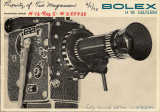 Bolex Paillard H16 SBM User manual
Bolex Paillard H16 SBM User manual
-
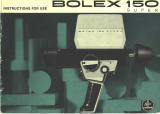 Bolex Paillard 150 Super User manual
Bolex Paillard 150 Super User manual
-
 Bolex Paillard C8 User manual
Bolex Paillard C8 User manual
-
Bolex Paillard H16 EL User manual
-
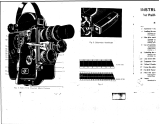 Bolex Paillard H User manual
Bolex Paillard H User manual
-
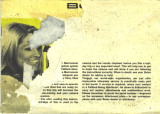 Bolex Paillard 7.5 MacroZoom User guide
Bolex Paillard 7.5 MacroZoom User guide
-
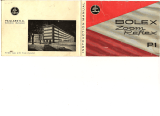 Bolex Paillard ZOOM REFLEX P1 User manual
Bolex Paillard ZOOM REFLEX P1 User manual
-
 Bolex Paillard H16 EBM Electric User manual
Bolex Paillard H16 EBM Electric User manual
-
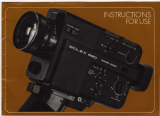 Bolex Paillard 680 MacroZoom User manual
Bolex Paillard 680 MacroZoom User manual
-
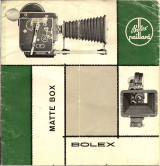 Bolex Paillard H8 User manual
Bolex Paillard H8 User manual
Other documents
-
ARRI ARRIFLEX 16 S Operating instructions
-
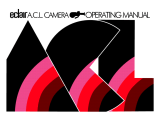 ECLAIR ACL II User manual
ECLAIR ACL II User manual
-
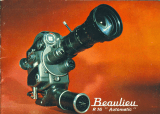 BEAULIEU R16 Automatic User manual
BEAULIEU R16 Automatic User manual
-
 AAD SR-2 User manual
AAD SR-2 User manual
-
ARRI ARRIFLEX 16S User manual
-
ARRI ARRIFLEX 35 II C Operating instructions
-
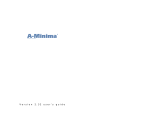 AAton A-Minima User guide
AAton A-Minima User guide
-
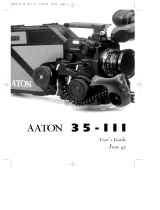 AAton 35-III User guide
AAton 35-III User guide
-
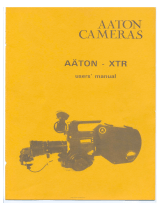 AAton XTR User manual
AAton XTR User manual
-
 AAton Penelope v1.31 User guide
AAton Penelope v1.31 User guide



































